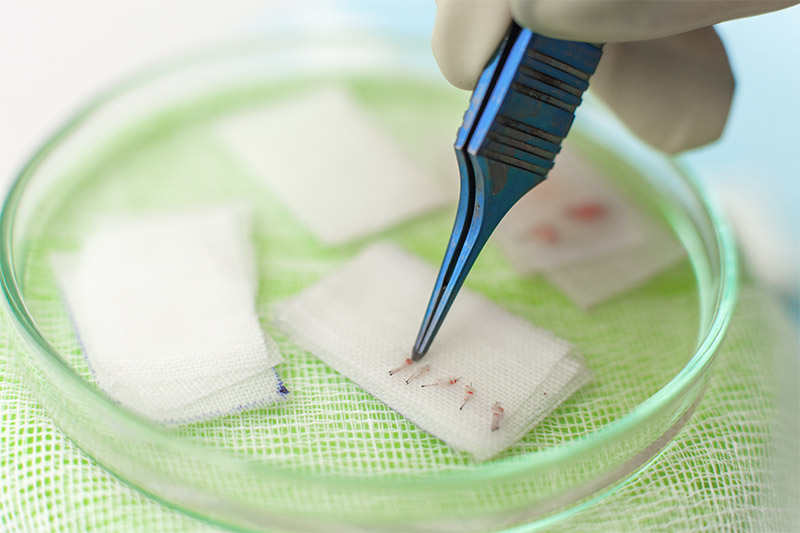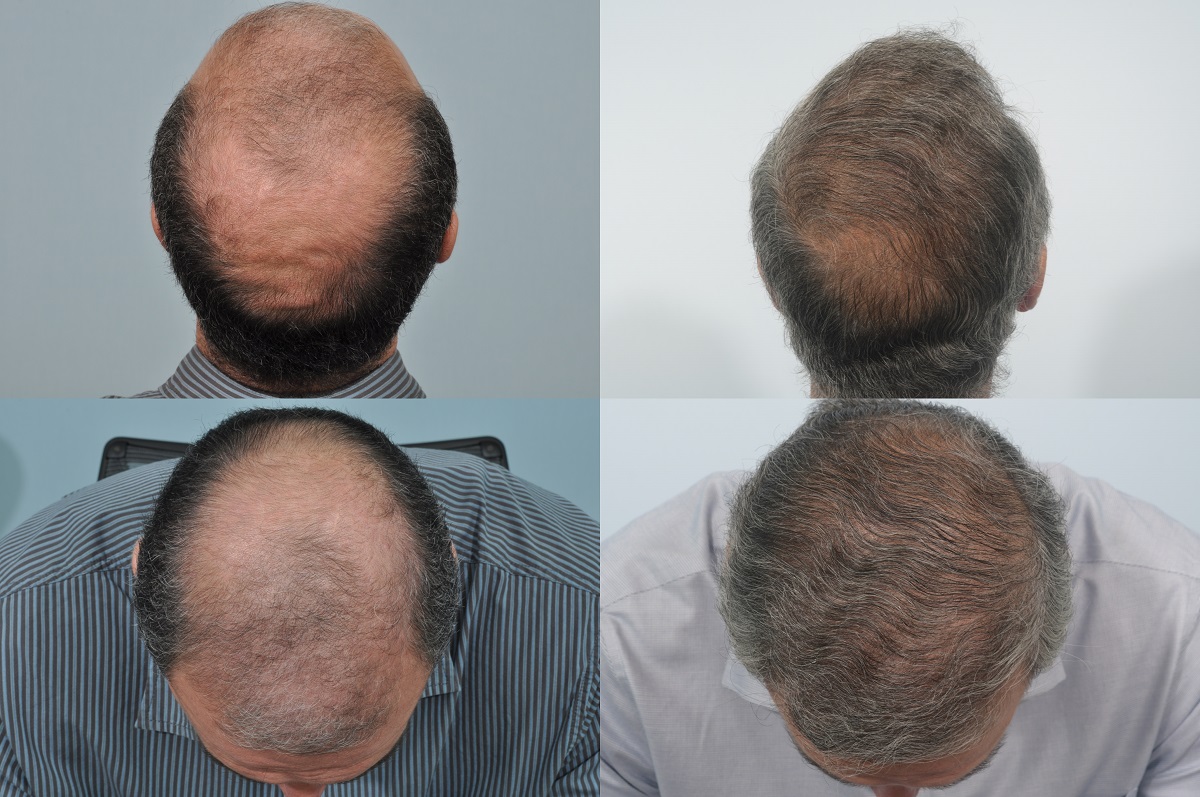Table Of Content

The procedure is usually used for people who are experiencing male- or female-pattern baldness. Within 2 to 3 weeks after surgery, the transplanted hair will fall out, but you should start to notice new growth within a few months. Some surgeons prescribe the hair-growing drug minoxidil (Rogaine) to improve hair growth after transplantation, but it’s not clear how well it works. The results of a hair transplant are visibly long-lasting and are considered to be permanent. The procedure is also time-consuming and does involve a healing and recovery process. For these reasons, people who have already experienced significant thinning of the hair on their scalp are the typical candidates for a hair transplant.
After the Procedure

Like any medical procedure, a hair transplant takes place in a medical facility or office. It’s a one-day outpatient procedure, and patients typically undergo the surgery with a local anesthetic. Most patients are able to drive themselves home after the procedure. The technicians generally do the final part of the procedure, inserting the individual grafts in place.
Everything You Need to Know About Hair Transplants
After a hair transplant, most patients feel itching in the donor and transplanted areas of the scalp because of the incisions that were made. The appearance of crusts (scabs) and new hair growth causes itching. Itching disappears after a month of hair transplantation, and in some cases, it may last for several months. In this case, you can consult your doctor to prescribe the appropriate treatment.
Follicular unit extraction (FUE)
If you'd find it helpful, you can ask your provider if a payment plan is available. Hair transplants are usually done as an out-patient visit at a location like a plastic surgeon's office, meaning you don’t need to stay at a hospital to get a hair transplant. You will be awake during the procedure, but your scalp will be numb so the procedure won’t be painful. Recovery can take place at home, and your care team will give you instructions for scalp aftercare and pain management. Male-pattern baldness or female-pattern baldness are known as androgenetic alopecia.
While these advances are giving patients natural-looking results, the outcome still depends largely on the surgeon you select. You want to choose a doctor who understands hair loss and performs hair transplants regularly. Rather, it's a cosmetic surgery to increase confidence and improve a person’s emotional well-being.
What conditions does hair restoration surgery treat?
After your hair follicles are grafted into areas where your hair is thinning, it takes some time for your skin to heal. In fact, it’s normal for some of your hair to fall out for the first three months after the procedure. To give you an idea of the average hair transplant timeline,below is a general description of what you can expect in the months following your hair transplantation procedure. In contrast, grafts can be individually removed from the back of the patient’s head during an FUE procedure.
Wendy Wisner is freelance journalist and international board certified lactation consultant (IBCLC). She has written about all things pregnancy, maternal/child health, parenting, and general health and wellness. The International Alliance of Hair Restoration Surgeons and the International Society of Hair Restoration Surgery are nonprofits with worldwide directories of qualified surgeons.
“Watching All This Work Fade Away”: Chris Bumstead's Happiness Turns to Sadness Days After Getting a Hair Transplant - EssentiallySports
“Watching All This Work Fade Away”: Chris Bumstead's Happiness Turns to Sadness Days After Getting a Hair Transplant.
Posted: Thu, 07 Dec 2023 08:00:00 GMT [source]
Scientists and researchers seek to develop an alternative to hair transplantation to treat baldness and restore lost hair. Recently, we found some studies on stem cells and their ability to regenerate new hair grafts. There is another type of hair transplantation, which is beard and mustache transplantation. It is prevalent among men who suffer from a lack of beard hair growth or thinning.
2024 Happy Head Review: Does It Actually Work? - Healthline
2024 Happy Head Review: Does It Actually Work?.
Posted: Thu, 31 Aug 2023 07:00:00 GMT [source]
A hair transplant can give you permanent, natural-looking results
FUE takes place in a single long session or multiple small sessions. An FUE surgery time varies according to the surgeons experience, speed in harvesting and patient characteristics. FUT and FUE both involve transplanting individual hair follicles. During FUT surgery, a surgeon cuts a strip of skin from the back or side of your scalp and then extracts the hair follicles.
This can be an advantage if the person only requires a few grafts, as it may work out cheaper than paying a flat rate for the treatment. As most insurance companies view hair transplants as cosmetic, the majority of plans do not cover the process. While hair transplants are the most effective way to increase the amount or thickness of hair, they can be expensive in terms of both treatment and recovery. Some people cannot get a hair transplant, like those who suffer from health problems such as heart disease and kidney failure. Some cases suffer from weakness in the donor area and do not have enough hair to donate to other sites. Also, some infectious viruses, such as hepatitis or AIDS, differ due to the clinic's policy and whether they accept surgery for such cases.
Another advantage is that hair transplants offer natural-looking results because the hair comes from your own head, and has the right texture and color. Those who are interested in getting a hair transplant should thoroughly research the subject first and choose a skilled and experienced surgeon to carry out the treatment. As with FUSS, the surgeon will prepare the grafts and place them onto the recipient areas. The entire process takes between 4 and 8 hours, depending on the transplant size. Afterward, your hair transplant team inserts each hair follicle in the Choi implanter pen.
Male- and female-pattern baldness aren't the only conditions that might prompt someone to seek a hair transplant. You might also be a candidate for a hair transplant if you've experienced hair loss from other causes, such as injuries or lupus. Hair transplants are primarily performed on people who are experiencing male- or female-pattern baldness (androgenetic alopecia).
Once removed, hair follicles are prepared for placement by our highly-specialized team. During this time, you can sit back and relax with a book or your favorite TV show. The follicles are then strategically placed to match your hairline for a natural-looking result. Candidates should be in good overall health to receive a hair transplant. It is also not the right choice for women who are pregnant or have recently given birth. Usually, FUE is less invasive than FUSS, and there is a lower likelihood of experiencing complications, such as scarring or post-operative pain.
Ultimately, the cost of a hair transplant varies from person to person based on the number of grafts required. Factors like your hair loss pattern, hair density, and personal restoration goals will play a significant role in determining the number of grafts needed and, consequently, the overall cost. On average, most individuals can expect a price range of $8,000 to $18,000, with the average cost being around $10,000. The use of both scalp flaps, in which a band of tissue with its original blood supply is shifted to the continue bald area, and free grafts dates back to the 19th century. In 1897, Menahem Hodara successfully implanted hair taken from the unaffected areas of the scalp on to the scars that were left bald by favus. Their efforts did not receive worldwide attention at the time, and the traumas of World War II kept their advances isolated for another two decades.
Over time, surgeons began using mini- and micro-grafts to minimize the appearance of transplanted hair on the scalp. There are two types of “modern” hair transplantation procedures that are currently performed. You should be given a spray to use to help recovery and hair growth. A hair transplant in the UK can cost anywhere between £1,000 and £30,000, depending on the extent of hair loss, the type of procedure you have, and the quality of the clinic and its team. In terms of maintenance and care, you should not wash your hair for at least three days after your hair transplant procedure.
Depending on the health of your transplanted hair, your hair may not grow back as thick as expected. FUE hair transplants restore hair by replacing these old follicles with new follicles that are still able to grow hair. As you get older, the three-phase cycle of hair growth and regrowth shortens until follicles no longer regrow hairs. The best candidate for a FUE hair transplant is someone with thinning hair or balding who still has enough hair nearby to use for a transplant.

No comments:
Post a Comment